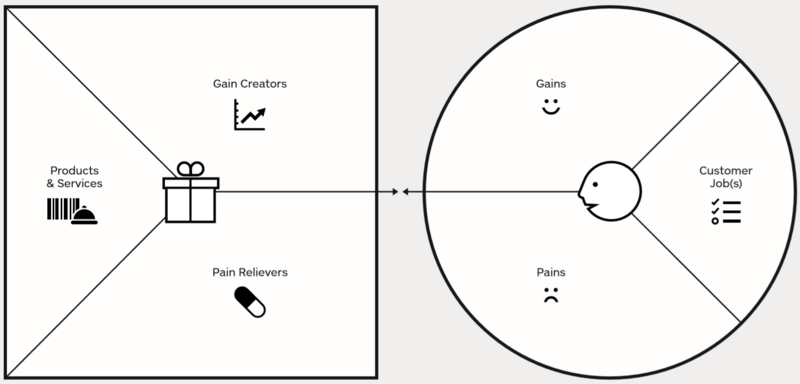Value Proposition Canvas
(→Limitations) |
(→Application) |
||
| Line 18: | Line 18: | ||
== Application == | == Application == | ||
| − | [[File:Value Canvas2.PNG|frameless| | + | [[File:Value Canvas2.PNG|frameless|800px|caption]] |
<ref>den Ouden, E. (2012) ''Innovation Design''. Springer</ref> | <ref>den Ouden, E. (2012) ''Innovation Design''. Springer</ref> | ||
Revision as of 09:22, 16 February 2018
Contents |
Abstract
An important aspect of project management is stakeholder management which contains many different tools and theories. An essential part of this management is the alignment of stakeholder expectations with project deliverables. The reason for a project initiation is a business case. These business cases are based on needs from stakeholders such as customers/users. Users are the persons or organizations who will use the project's product, service, or result.[1] To make sure the project is a success the needs of users must be thoroughly understood. As an example a consulting company can have the government as a client on a project, but the users of the project outcome are the citizens. No matter how succesful the government finds the project, it can all go to waste if the users are not satisfied. A tool for analysing these needs is the Value Proposition Canvas. The canvas assesses two different aspects:
1. The internal organizational side containing which products and services the organization will provide to the user.
2. The external user side which represents the user needs in form of pains of status quo and gains of project success.
The project manager can use the tool to analyse and connect these two aspects to make sure that all needs of users are satisfied as well as being differentiated by bringing gain creators to the users.
Project manager relation
Since the expectations of stakeholder groups will differ, it is not unusual for conflict to exist regarding the importance or desirability of aspects of strategy. [2]
Understanding the customer/user
Application
[3] Customer segment:
Customer job(s):
Pains:
Gains:
Value proposition:
Products & services:
Pain relievers:
Gain Creators:
Limitations
1. Not looking at the Value Proposition Canvas as two separate building blocks:
2. Mixing several customer segments into one canvas:
3. Creating your Customer Profile through the lens of your value proposition:
4. Only focusing on functional jobs:
5. Trying to address every customer pain and gain:
6. Difficulty of data collection:
References
- ↑ Project Management Institute, A Guide to the Project Management Body of Knowledge (PMBOK® Guide), Fifth Edition, 2013
- ↑ Johnson, Gerry. (2015) Fundamentals of Strategy, Third Edition
- ↑ den Ouden, E. (2012) Innovation Design. Springer
- ↑ http://blog.strategyzer.com/posts/2015/2/19/5-common-mistakes-to-avoid-when-using-the-value-proposition-canvas
